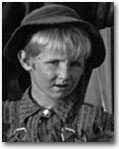

 |
 |
|
 |
The 1913-1914 Colorado Coal Strike was one of the most violent strikes in United States history. Although they were ultimately defeated, the coal miners in this strike held out for 14 months in makeshift tent colonies on the Colorado prairie. The strike resulted in an estimated 66 deaths and an unknown number of wounded. Although the United Mine Workers of America (UMWA) lost the Colorado Strike, it was, and still is, seen as a victory in a broad sense for the union. The Coal War was a shocking event, one that galvanized U.S. public opinion and eventually came to symbolize the wave of industrial violence that lead to the "progressive" era reforms in labor relations (Crawford, 1995; Gitelman 1998). Coal miners in Colorado did ultimately see some material gains.
The Southern Coal Field is in southern Colorado on the east side of the Rockies. The coal seams occur in the foothills of the Sangre de Cristo Mountains. The coal field lies in two counties, Las Animas and Huerfano Counties. The Southern Coal Field of Colorado supplied high-grade bituminous coal, primarily used for coking coal for the steel industry, which supplied rails for the expanding U.S. rail network. Because of the interest of the railroads in maintaining a steady supply of coking coal, the Southern field was heavily industrialized, dominated by a few large-scale corporate operations. The largest of these operations was the Rockefeller-owned Colorado Fuel and Iron Company (C.F.&I.). Founded in 1880 by John Osgood, C.F.&I. produced 75% of Colorado's coal by 1892. C.F.&I. was acquired by the Rockefeller and Gould interests in 1903 (Scamehorn 1992). In 1906, the Engineering and Mining Journal estimated that 10% of Colorado's population depended on C.F.&I. for their livelihood (Whiteside 1990: 8-9). C.F.&I. and the other large operators, such as the Osgood-owned Victor-American Fuel Company, wielded formidable political clout in early 20th-century Colorado. Their control over the political of Las Animas and Huerfano Counties was nearly total. The coal miners in the Southern Field were located up canyons where the coal seams were exposed by erosion. Most of the miners lived in these canyons in company towns, in company houses, bought food and equipment at company stores and alcohol at company saloons. The doctors, priests, schoolteachers, and law enforcement were all company employees. The entries to the camps were gated and guarded by deputized armed guards (Beshoar 1957:2; McGovern and Guttridge 1972:23). The Colorado mines themselves were notoriously unsafe, among the most dangerous in the nation, second only to Utah. In the years from 1884-1912, (28 years), 42,898 coal miners were killed in mine accidents in the U.S. Of these, 1,708 were killed in Colorado mines. Miners died in Colorado coal mines at over twice the national average (McGovern and Guttridge 1972:66; Whiteside 1991:74-5), while hand-picked coroner's juries absolved the coal companies of responsibility almost without exception. For example, in the years from 1904-1914, the juries picked by the Sheriff of Huerfano County, Jeff Farr, found the coal operators to blame in only one case out of 95 (Whiteside 1990:22). The workforce itself was largely immigrant labor from Southern and Eastern Europe, who had been brought in as strikebreakers in 1903 (Beshoar 1957:1; McGovern and Guttridge 1972:50). Before the strike, the UMW counted 24 distinct languages in the Southern Field coal camps. In 1912, 61% of Colorado's coal miners were of "non-Western European origin" (Whiteside 1991:48). This obviously had consequences for organizing the miners and maintaining unity among them during the strike. It also resulted in the strike and its violence being seen largely as a result of Greek and Balkan culture, rather than the conditions in the Southern Colorado coalfields. |
Home | Notice | Site Index |
